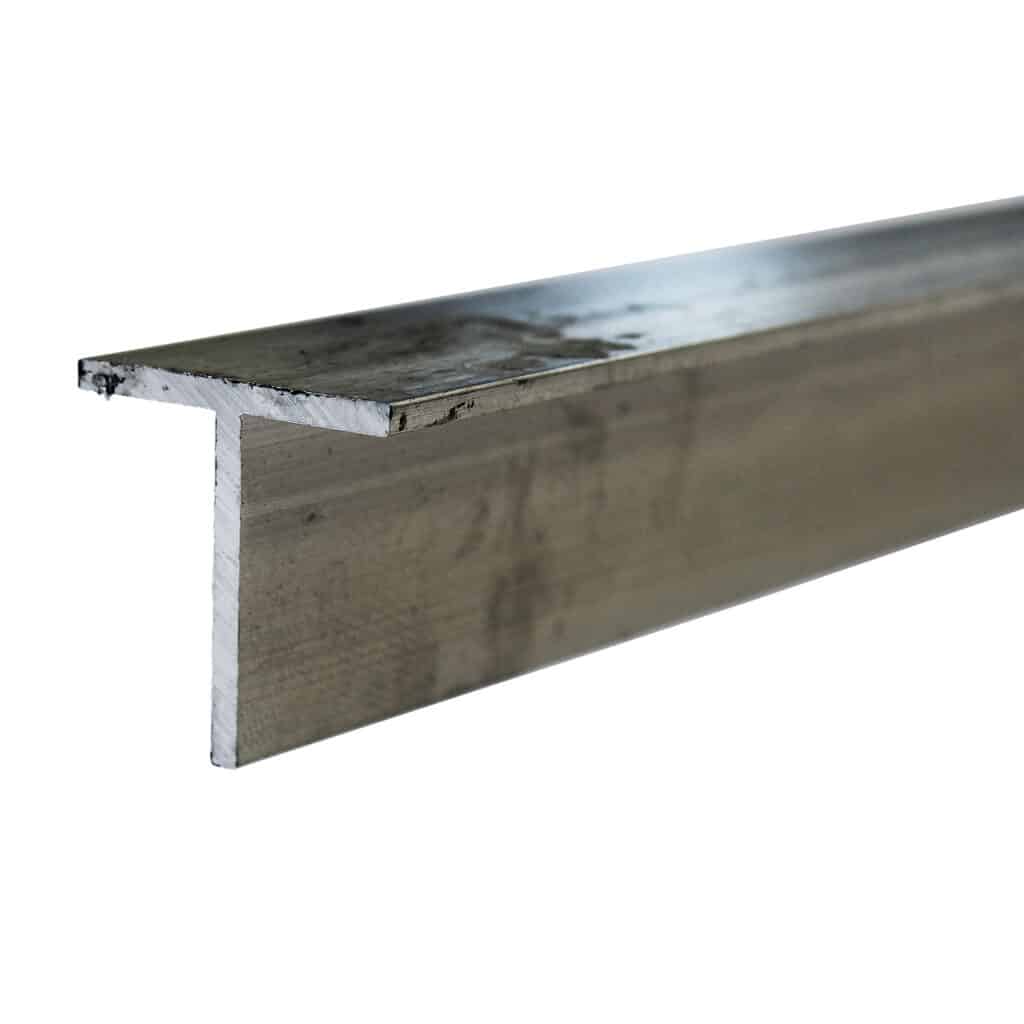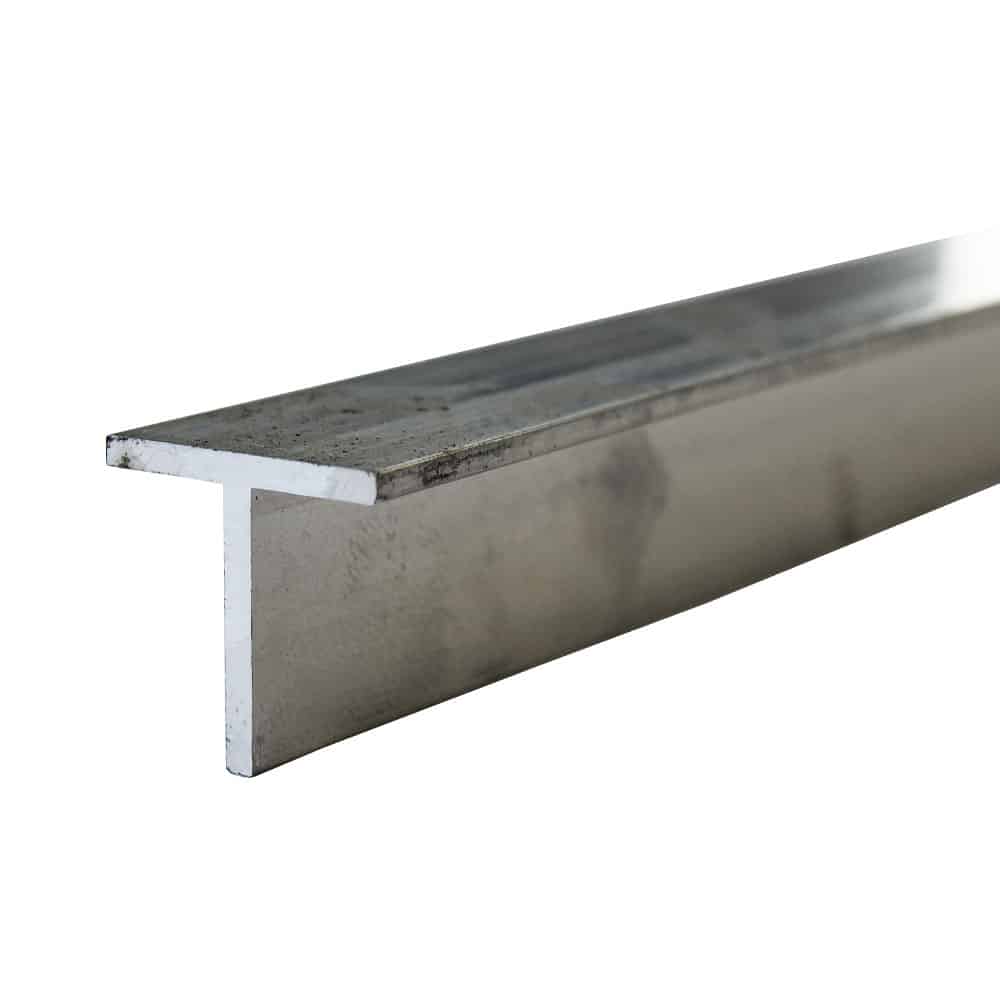- Massive Range
- FREE UK Delivery
- Rapid Dispatch
- Massive Range
- FREE UK Delivery
- Rapid Dispatch
- Massive Range
- FREE UK Delivery
- Rapid Dispatch
£19.49 – £49.99Price range: £19.49 through £49.99 inc VAT


This website is secured:

Tee bar aluminium sections have become increasingly popular in today’s engineering and construction industries. With its corrosion-resistant and recyclable properties, this material is both environmentally friendly and practical. But that’s not all; its fantastic heat and electrical conductivity make it a favourite among those in need of electricity and heat transfer, like air-conditioning or electrical works. Additionally, the shiny, durable, lightweight, and malleable characteristics of this material make it versatile and practical in various applications. Whether you’re using it for residential or commercial purposes, the tee bar aluminium section is the way forward.
The versatile and high-performance properties of aluminium make it a good choice for a variety of applications. An important feature of this aluminium section is its corrosion resistance, which makes it a great choice for outdoor use or in contact with water. As an added bonus, aluminum is easily recyclable, helping to reduce waste and promote sustainability. In addition to its excellent heat and electrical conductivity, tee bar aluminium also has a shiny, eye-catching appearance. As a result of its malleability and versatility, this heavy-duty metal is popular across a wide range of industries. You should definitely consider tee bar aluminium whether you’re working on a small DIY project or a large-scale industrial application.
We also carry a wide range of aluminium as sheet metal, round tube, U channel, angle iron and flat bar.
Speciality Metals is known to be the United Kingdom’s best up-and-coming small-quantity metal company.
Furthermore we stock a vast range of aluminium tube lengths that compliment our mesh range perfectly.
Over 50,000 customers of Specialty Metals are provided with fast, friendly customer service every year. We’re the place to try when you need metal of any shape and size. We’re based in Warrington, UK.
We pride ourselves on our rapid turnaround and a large range of options.
We are developing our online offers to give more customers access to the best metals and mesh available in the UK.
Our mission is to be the UK’s go-to supplier for small-quantity metal requests. With an ever-growing range of products, we provide you with high quality materials, outstanding customer service and fast delivery times.
Yes, it is possible to bend or form aluminum T-sections, but certain considerations must be taken into account to ensure a successful outcome without causing damage or undesirable deformations.
Material Properties: The specific alloy and temper of the aluminum T-section can greatly influence its bendability. For example, 6061-T6 is a common alloy and temper of aluminum that’s known for its strength but may be less ductile than other alloys like 6063-T5. It’s crucial to understand the properties of the specific material you’re working with.
Bend Radius: Aluminum has a minimum bend radius, which is the smallest radius you can bend the T-section without causing it to crack. The bend radius is often related to the material’s thickness and properties. Bending the aluminum beyond this minimum radius can cause cracking or weakening of the section.
Heating: Applying controlled heat can make the bending process easier and reduce the risk of cracking, especially for alloys that are less ductile. However, excessive or uneven heating can compromise the material’s properties, so it’s essential to ensure uniform and controlled heat application.
Tooling: Using the correct tools, like bending jigs or press brakes, can help achieve accurate and consistent bends. Ensuring the tooling is designed to accommodate aluminum is vital, as tooling for harder metals might cause damage.
Anodised or Painted Sections: If the T-section is anodised or painted, bending it can lead to visible cracks in the surface finish at the bend site. It’s often recommended to bend the aluminum first and then finish it to prevent this.
Work Hardening: Aluminum can harden as it’s bent, a phenomenon known as work hardening. This can increase the risk of cracking if multiple bends are made successively. Annealing, or controlled heating, can be used to soften the aluminum between bends.
Prevention of Cracks: Using lubricants can help reduce friction and the potential for cracks when bending. Furthermore, ensuring the material is free of any surface defects or scratches before bending can reduce weak points.
Springback: Aluminum, like other metals, will exhibit some springback after bending, meaning it will try to return to its original shape. This effect should be considered when determining the degree to which the material is bent, ensuring the final desired shape is achieved.
Aluminum T-sections, like other aluminum products, are highly recyclable, and this is one of the metal’s most compelling attributes. Aluminum maintains its inherent properties throughout the recycling process, which means it can be recycled indefinitely without any degradation in quality. This contrasts with some other materials that may suffer a decline in quality after being recycled multiple times. Recycling aluminum requires only about 5% of the energy used to produce the primary metal from bauxite ore, resulting in significant energy savings. Furthermore, the recycling process emits a fraction of the greenhouse gases compared to primary aluminum production. As a result, there’s a strong economic and environmental incentive to recycle aluminum T-sections. In many regions, a well-established recycling infrastructure ensures that used aluminum products, including T-sections, are collected, processed, and returned to the production cycle. The recyclability of aluminum not only reduces waste and conserves natural resources but also substantially decreases the environmental footprint of the material, reinforcing aluminum’s position as a sustainable choice in various applications.
Aluminum T-sections, like all materials, are subject to thermal expansion and contraction in response to temperature fluctuations. When aluminum is subjected to an increase in temperature, it expands, and when cooled, it contracts. The rate at which aluminum expands or contracts with temperature changes is defined by its coefficient of thermal expansion (CTE).
Compared to many other metals, aluminum has a relatively high coefficient of thermal expansion. This means that it will generally expand or contract more than materials like steel over the same temperature range. While this property is beneficial in some applications, such as ensuring tight seals in heat exchangers, it can also pose challenges in others, especially when aluminum is combined with materials having different CTEs.
In environments with considerable temperature fluctuations, structures or products made of aluminum T-sections might experience stresses or warping, especially if they are constrained and unable to freely expand or contract. This is particularly noteworthy in applications where aluminum is joined with other materials. For instance, in composite structures where aluminum is used alongside materials with a significantly different CTE, the differential expansion can lead to mechanical stresses at the interface.
In addition, while aluminum maintains its strength at low temperatures and becomes even stronger, its strength can decrease at very high temperatures. However, it’s worth noting that aluminum’s excellent thermal conductivity can help dissipate heat, which can mitigate some temperature-induced effects in certain applications.
When aluminum T-sections come into contact with certain metals, they can be susceptible to galvanic corrosion, a phenomenon that occurs when two dissimilar metals make electrical contact in an electrolyte, such as water. This reaction is guided by the galvanic series, which ranks metals by their electrochemical potential. Because of its position in this series, aluminum, being relatively anodic, can corrode preferentially to protect more cathodic metals, especially when in direct contact with metals like copper, steel, or stainless steel in moisture-prone environments. This interaction is particularly concerning in areas like construction and maritime applications. However, there are methods to mitigate these risks: isolating metals using insulators, applying protective coatings, selecting metals with similar galvanic properties, and ensuring designs that facilitate proper drainage. Notably, while aluminum is reactive with certain metals, it inherently forms a protective oxide layer when exposed to oxygen, providing a natural defense against general corrosion. Still, this layer can be disrupted during galvanic reactions.
Regular Cleaning: Dust, dirt, and other contaminants can accumulate on the surface of aluminum T-sections, especially in outdoor or industrial environments. Regular cleaning with mild detergent and water can help maintain their appearance. Always use a soft cloth or brush to avoid scratching the surface.
Avoid Harsh Chemicals: It’s essential to avoid cleaning agents or chemicals that are caustic or acidic, as these can damage the aluminum’s protective oxide layer. If unsure, it’s best to test a small inconspicuous area first or consult the manufacturer’s recommendations.
Inspect for Galvanic Corrosion: If your aluminum T-sections are in contact with other metals, especially in moist environments, regularly inspect for signs of galvanic corrosion. If detected, consider using barriers, paints, or coatings to prevent direct metal-to-metal contact.
Touch-Up Scratches: If the T-sections are painted or anodised, scratches or abrasions can compromise the protective finish. Using touch-up paint or sealants can help maintain the section’s protective layer and appearance.
Avoid Abrasive Materials: When cleaning or polishing aluminum, avoid abrasive materials or pads that can scratch or damage the surface. Instead, opt for non-abrasive cleaning tools.
Check for Structural Issues: In load-bearing applications, periodically inspect the T-sections for any signs of wear, deformation, or damage. Address any structural concerns promptly to ensure safety.
Lubrication: If the T-sections are part of a moving assembly, ensure that any contact points or joints are adequately lubricated to prevent wear and reduce friction.
Protection from Extreme Environments: In highly corrosive environments, such as coastal areas or industrial settings with acidic or caustic fumes, consider additional protective measures. This might include specialised coatings, paints, or barriers that offer enhanced resistance.
Check out our blog illustrating how to install and maintain aluminium T section. It will prove a useful read to help you to make an informed decision on which material would work best for you.
We are also very proud of our ever expanding YouTube channel.
Our goal for our blogs and help guides is to answer as many questions as possible to help to explain the possibilities of mesh to our customers. Contact us today if you have any questions at all. We are always really keen to help in any way that we can.
We are also very proud of our highly popular eBay store, check us out there too.
Thank you for checking out our product.
£19.49 – £49.99Price range: £19.49 through £49.99 inc VAT
£17.99 – £49.99Price range: £17.99 through £49.99 inc VAT

£19.49 – £49.99Price range: £19.49 through £49.99 inc VAT

£17.99 – £49.99Price range: £17.99 through £49.99 inc VAT